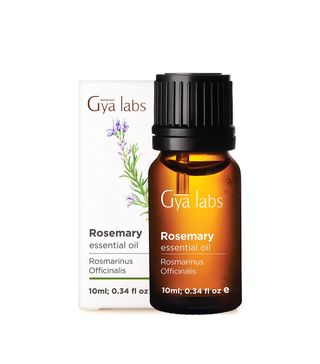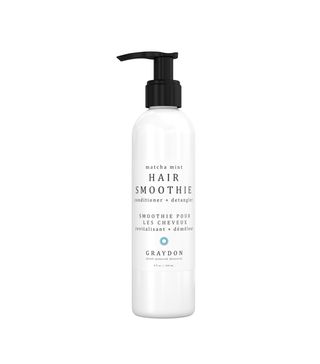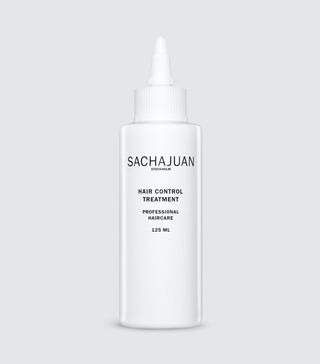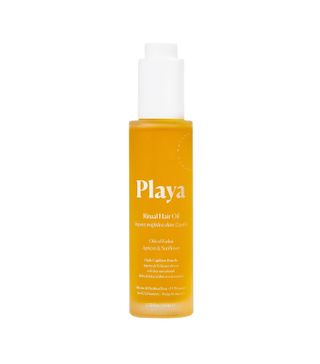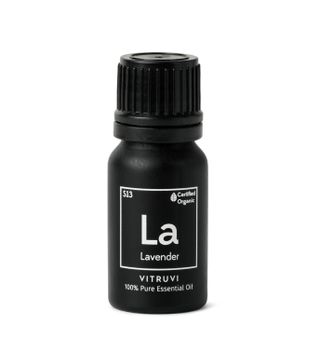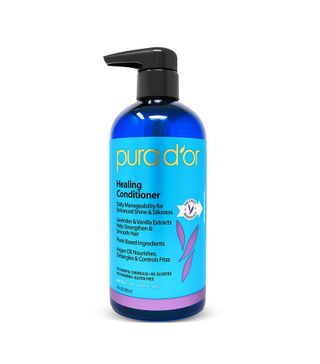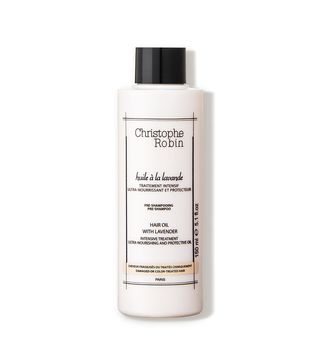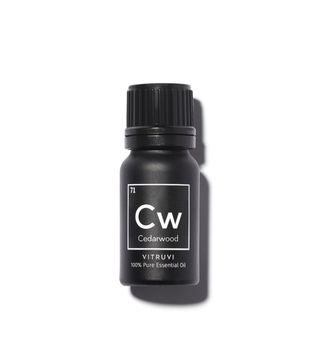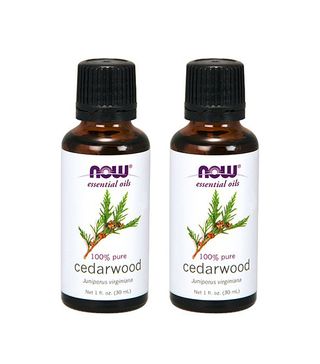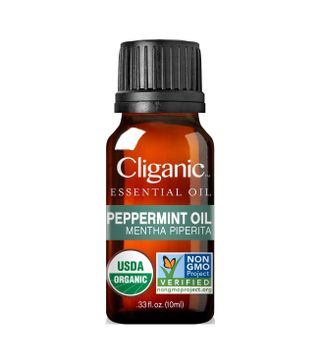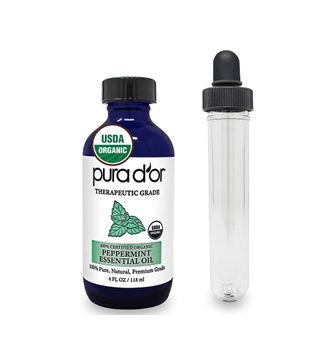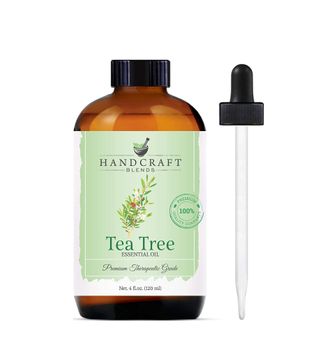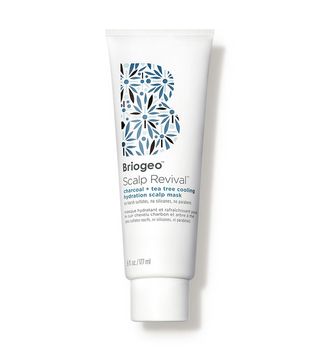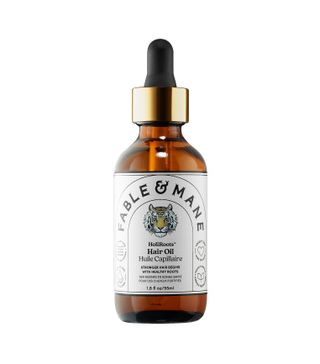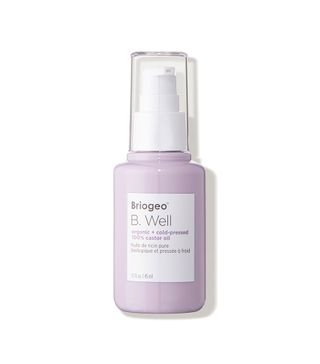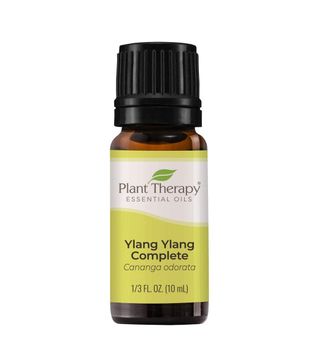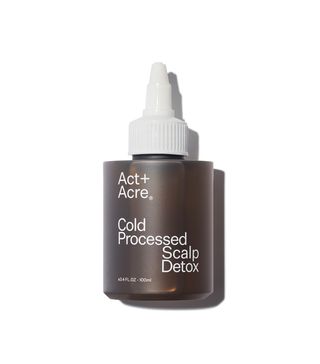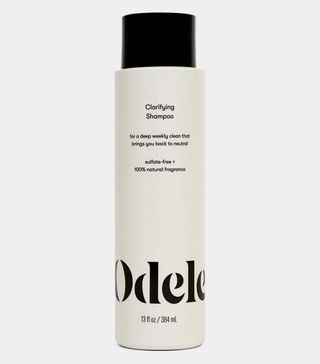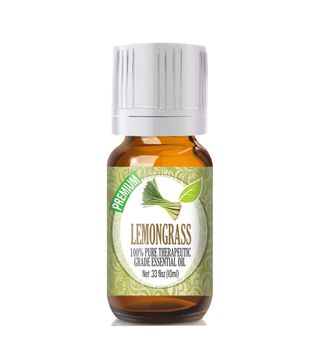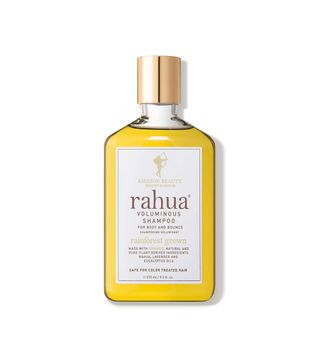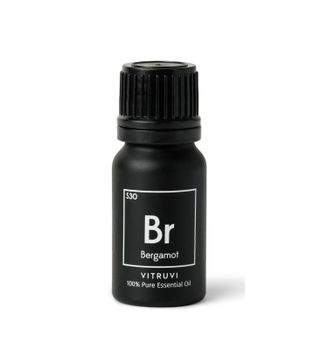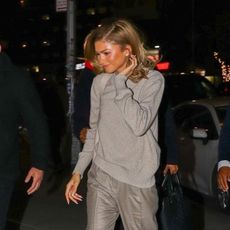These 9 Essential Oils Are the Secret to Longer, Healthier Hair
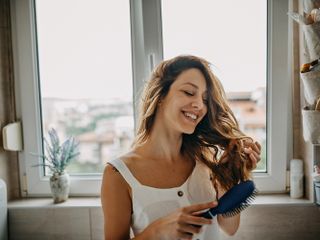
The most wondrous thing about essential oils is that even when you think you know all of their magic, you soon discover something else they can do. In addition to pain and stress management, clearing skin and sinuses, and preventative health, essential oils have been known to both curb thinning hair and balding and stimulate new hair growth. Even as a semi-regular essential-oil user, I didn't know that until recently, but it all makes sense. From repairing damaged hair follicles and shafts, poor circulation, and fungal infections on the scalp to enhancing thickness, strength, or shine, it seems there is an oil for every kind of hair concern.
"Essential oils are an amazing alternative to so many of the synthetic products we have come to see as 'normal' in our lives and in our homes. These potent oils empower us to take our health and vitality into our own hands," says Julie Botton, an Institute for Integrative Nutrition–certified health coach and DoTerra wellness advocate, who truly believes that our health is so much more than the food we put in our mouths. Working with clients of all ages and needs, she looks at the big picture to make realistic upgrades on a slow and consistent basis, and essential oils are the first step.
THE POWER OF ESSENTIAL OILS
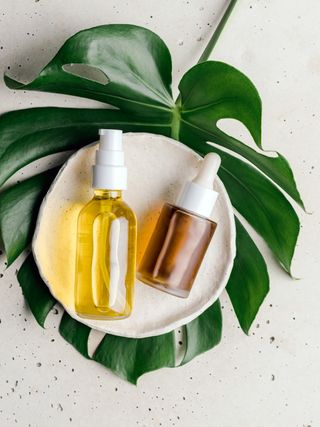
Essential oils have been used for generations in alternative, Eastern, and homeopathic medicines. They're made from volatile compounds found in the roots, petals, seeds, bark, and leaves of plants that actually protect the plants from environmental threats and changing seasons. When properly harvested and distilled, pure concentrated plant extracts contain 50% to 70% more power than the herbs themselves. The types and uses of essential oils are endless, and with some guidance, you can use them effectively to suit your needs.
"For those just starting their oil journey, I always recommend beginning with aromatic and topical use and a diffuser for mood management, sleep, energy, and anything respiratory-related," Botton says. "Topically, it can be used for so many different uses. On a typical day, I use yarrow and frankincense on my skin for anti-aging benefits, rosemary on my scalp for hair growth, peppermint on my belly for digestion, rose as a natural deodorant, lavender and melaleuca in my mascara, and lemon in my water for detoxification." The general rule of thumb is to always spot-test before using to avoid irritation, and dilute into a carrier oil, such as fractionated coconut oil, pure jojoba, or almond, to not irritate the skin or scalp.
HOW ESSENTIAL OILS CAN HELP WITH HAIR LOSS
In addition to starting with the right products, Botton shares these "recipes" with her clients to boost their effectiveness. A great way to start is by adding 30 drops of oil to your conditioner bottle and shake. For an overnight mask, add five drops of the oil of your choice below to a base of castor oil, sleep with your hair wrapped, and shampoo upon awakening. Even adding some lavender essential oil to a lash or brow serum will boost hair growth.
The Best Essential Oils for Hair Growth
1. Rosemary
Fragrant rosemary is at the top of Botton's list when it comes to hair growth. In addition to aiding with coughs, headaches, muscle aches, cellulite, and infection, it also has anti-inflammatory properties that are helpful in keeping scalp issues away. It is also wonderful at promoting blood circulation to the scalp, making way for new growth. A 2015 study showed that rosemary oil helped block DHT, the male hormone that causes hair loss and balding, even better than the common drug minoxidil.
A great daily treatment that is wonderful on its own or with an added boost of essential oil is the Graydon Skincare Hair Smoothie. Erucic acid–rich broccoli seed oil is blended with vanilla and peppermint for a very nourishing hair treatment that detangles, deep-conditions, and nourishes hair and scalp, leaving your hair soft, smooth, and healthy.
The Sachajuan Hair Control Treatment is a daily leave-in treatment with rosemary essential oils that absorb into the hair strands and the scalp, working to stimulate hair growth and enhance hair quality.
Rosemary extract and apricot kernel oil make this hair oil a great hydrating protectant from UV damage, chlorine, and the drying effects of the ocean.
2. Lavender
Calming and restorative, lavender oil is a great addition to your nighttime routine if you suffer from insomnia, anxiety, or stress. As an antimicrobial, it keeps bacteria and fungus away from forming on the scalp, promoting hair growth and increasing the thickness of hair.
The right conditioner is important when it comes to hair that is thinning, and this conditioner is great for repairing damaged hair follicles. Soothing lavender is paired with argan oil and vanilla extract to detangle, tame frizz, and restore volume, making way for new hair to grow.
This is a great treatment to use if you have time before showering. Color-treated, overprocessed, or damaged hair can benefit from the vitamin E and lavender formula.
3. Cedarwood
A 1998 study proved that cedarwood was one of the most effective essential oils that improve hair growth. The oil is used to restore length, thickness, and color.
Derived from various coniferous trees such as those in the cypress, juniper, and pine families, it dates as far back as ancient Egypt and Samaria as an aid in skin, oral, and respiratory health. Massaging this pure oil into your scalp (with a carrier oil) and wrapping your head in a towel is a great way to get the blood flowing in your scalp again, as it promotes hair growth and strength.
4. Peppermint Oil
A hybrid of watermint and spearmint plants, peppermint essential oil is as refreshing, energizing, and uplifting in the body as it is on the tongue. Not only does it quickly alleviate headaches and improve focus, but it can also be rubbed on the belly to relieve digestion issues and nausea, according to Botton. Even better, the menthol in peppermint oil increases blood flow to the area it's applied (for instance, your hair follicles), therefore promoting hair growth.
Gently massage this scrub onto your scalp. The antiseptic properties in the formula leave hair invigorated, balanced, and clean.
This essential oil naturally improves thickness and nourishes damaged hair, as it helps to stimulate the scalp and improve circulation.
5. TEA TREE
Tea tree, also known as melaleuca, is long-known for its capabilities to heal acne and canker sores. It also acts as a natural bug repellent. It has cleansing, antibacterial, and antimicrobial properties, and when used topically, it can help unclog hair follicles, increase hair growth, and prevent dandruff from forming.
This mask has nourishing charcoal, tea tree, and aloe vera, which draw out impurities and encourage hair growth. It will leave your scalp smooth, refreshed, and free of buildup.
6. Castor Oil
Derived from the seeds of the Ricinus communis plant in the tropical areas of Africa and Asia, castor oil is prized for many reasons, one being that it's a laxative. The colorless oil is rich in ricinoleic acid and several other fatty acids that inhibit the growth of the bacteria that cause acne. It can strengthen your strands and nourish your scalp, which in turn will help with hair growth.
This oil is a pre-wash root treatment that contains hydrating castor oil plus strengthening ashwagandha and dashmool for strong, healthy-looking, and beautiful hair.
Since castor oil tends to be thick, warm it up in your hands and leave it on overnight, shampooing twice in the morning. Even a little bit on the ends can help with smoothness. And applying it along your hairline is helpful to regrow baby hairs.
7. Ylang-Ylang
Ylang-ylang is a tropical, star-shaped flower that grows on the Cananga tree native to India, the Philippines, and Malaysia, and its aromatic scent is often used as a top note in perfumes. In addition to being a hormone balancer, it calms anxiety, stress, and fear and in turn increases blood circulation and libido.
The Act+Acre scalp detox has ylang-ylang essential oils that help dissolve excess oil, sweat, and product residue to clear the path for new optimal hair growth. Antioxidant-packed baobab and basil leaf soothe the scalp and protect the natural moisture balance of your hair.
This shampoo is light and neutral. It's made of 100% botanically sourced ylang-ylang essential oil and naturally derived cucumber and oakmoss—you won't believe that this luxurious shampoo is under $12.
8. Lemongrass
Healthy hair growth starts at the source, so keeping the scalp healthy and clear is the way to get there. Lemongrass effectively eliminates dandruff-causing bacteria as well as provides relief from scalp irritation.
Rahua's Voluminous Shampoo cleanses hair by removing excess oils. It also moisturizes and fortifies hair follicles and clarifies the hair without drying.
9. Bergamot
Bergamot's aromatic natural stimulants help direct blood flow to the scalp, providing enough oxygen and nutrients to the hair follicles and resulting in new growth. The citrus is rich in antioxidants and antimicrobials that help shield the hair from damaging oxidative stress that can strip it.
This all-natural hair oil has the antimicrobial properties of bergamot that are effective in getting rid of the buildup on the scalp—which can clog and irritate the hair follicles with an infection—ensuring that hair stays healthy, strong, and full.
Next up: This Secret All-Natural Ingredient Has So Many Healthy Uses
Disclaimer
This article is provided for informational purposes only and is not intended to be used in the place of advice of your physician or other medical professionals. You should always consult with your doctor or healthcare provider first with any health-related questions.
-
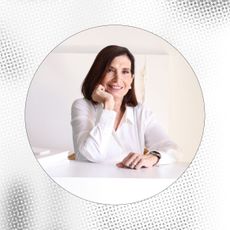 I've Been a Dermatologist for Over 40 Years—18 Products I Trust to Use on My Own Skin
I've Been a Dermatologist for Over 40 Years—18 Products I Trust to Use on My Own SkinDr. Loretta shares her best skincare advice.
By Kaitlyn McLintock
-
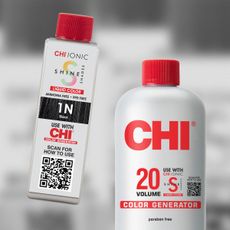 It's Confirmed: This Is the Key to Fresh-From-the-Salon Hair
It's Confirmed: This Is the Key to Fresh-From-the-Salon HairSponsor Content Created With CHI Haircare
By Aniyah Morinia
-
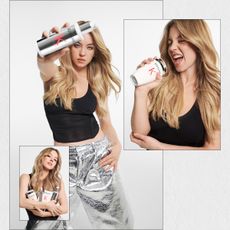 Editors and Stylists Agree: Your Hair Routine Is Missing These 6 Products
Editors and Stylists Agree: Your Hair Routine Is Missing These 6 ProductsSponsor Content Created With Kerastase
By Aniyah Morinia
-
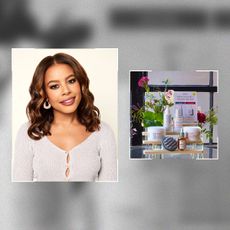 You *Can* Pivot to a Totally New Career—Briogeo Founder Nancy Twine Is Proof
You *Can* Pivot to a Totally New Career—Briogeo Founder Nancy Twine Is ProofHow she got her start might surprise you.
By Shawna Hudson
-
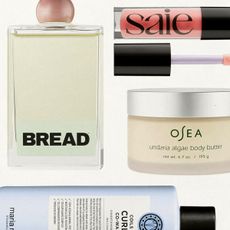 I'm Just a Girl: This Is How 4 Editors Solve Relatable Beauty Struggles
I'm Just a Girl: This Is How 4 Editors Solve Relatable Beauty StrugglesEditors know best.
By Maya Thomas
-
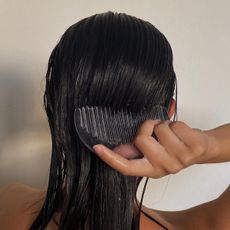 Derms Recommend This Ingredient to Fix Dry, Flaky Scalps (and It Only Costs $13)
Derms Recommend This Ingredient to Fix Dry, Flaky Scalps (and It Only Costs $13)Say goodbye to your scalp issues.
By Kaitlyn McLintock
-
 This Key Hair Staple Is a Must for Keeping Your Curls Juicy AF
This Key Hair Staple Is a Must for Keeping Your Curls Juicy AFIt's time to take the plunge.
By Maya Thomas
-
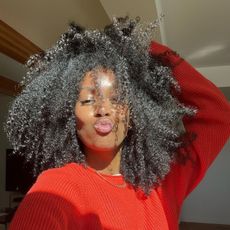 Argan Oil Can Bring Dull Hair Back to Life (Plus Prevent Damage and Split Ends)
Argan Oil Can Bring Dull Hair Back to Life (Plus Prevent Damage and Split Ends)Time to make this ingredient a haircare staple.
By Katie Berohn
